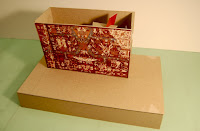

This became too complicated, and I needed to refine the area that I was mapping. Within this area I had to represent what happens in the moment of transition between the chaotic city and order of the university. To achieve that I began mapping out everything about it, to ananlze what happened and how to represent that.

For the assignment, there are three different maps that we need to create. The first two maps we have to develop have to do with this zone that I am exploring. The first of the maps has to be "a map that must be produced, constructed, a map that is always detachable, connectable, reversible, modifiable, and has multiple entryways and exits and its own lines of flight." The second map, explores the same concept but represented as a perspective, section, axon, ect.
For the first map, I have been exploring how to represent different parts of the grid, in a 3-D manner that can be read and express different ideas from both front and back. The first study I produced was in foam core and could eaily be manipulated, the next challenge was figuring out how to convey the same concept with Bristol paper.
For the second map, I am representing it as a axon showing the reverse figure ground, and extruding those pieces. Here is the current version that I am working on.
On the left side, I allowed the grid of the university campus to raise up while the right side representing Mexico City is a simple line drawing, to provide a contrast, a similar concept I found that I found intreging in the book "X Urbanism" by Mario Gandelsonas. Two of the images I looked at are below.






































